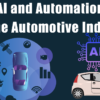Top 5 Marketing Strategies to Skyrocket Your Business Growth
Introduction
In today’s competitive business landscape, having a robust marketing strategy is essential for success. Businesses that fail to adapt to modern marketing techniques often struggle to stay afloat. In this article, we will explore the top five marketing strategies that can drive exponential growth for your business. These strategies have been carefully curated to ensure effectiveness, adaptability, and long-term sustainability.
1. Content Marketing: Establishing Authority & Building Trust
1.1 What is Content Marketing?
Content marketing focuses on creating and distributing valuable, relevant, and consistent content to attract and engage a defined audience. Unlike traditional advertising, content marketing aims to build trust and provide value to potential customers.
1.2 Benefits of Content Marketing
- Enhances brand awareness
- Improves search engine rankings (SEO)
- Establishes thought leadership in the industry
- Generates organic traffic
- Increases customer retention
1.3 Key Content Marketing Strategies
1.3.1 Blogging & Articles
- Regularly publish high-quality, informative blog posts.
- Optimize content for SEO using keywords and meta descriptions.
- Promote content on social media and through email newsletters.
1.3.2 Video Marketing
- Create engaging explainer videos, product demos, and behind-the-scenes content.
- Leverage platforms like YouTube, TikTok, and Instagram Reels.
- Optimize video titles, descriptions, and tags for better visibility.
1.3.3 Infographics & Visual Content
- Use data-driven infographics to simplify complex information.
- Share infographics on social media and embed them in blog posts.
1.3.4 Podcasting & Webinars
- Launch a podcast series related to industry insights.
- Host live webinars to interact with potential clients and address their concerns.
Content Marketing Performance Metrics:
| Metrics | Importance |
|---|---|
| Website Traffic | Measures audience reach |
| Engagement Rate | Tracks user interaction |
| Conversion Rate | Determines content effectiveness |
| Bounce Rate | Assesses content relevance |
2. Search Engine Optimization (SEO): Driving Organic Growth
2.1 Understanding SEO
SEO is the practice of optimizing your website to rank higher on search engine results pages (SERPs). This ensures that your business is more discoverable to potential customers searching for related products or services.
2.2 SEO Strategies to Implement
2.2.1 On-Page SEO
- Optimize website content with relevant keywords.
- Improve site speed and mobile responsiveness.
- Use internal and external linking strategies.
2.2.2 Off-Page SEO
- Build high-quality backlinks from reputable websites.
- Engage in guest blogging to expand audience reach.
- Leverage social media for content promotion.
2.2.3 Technical SEO
- Optimize website structure for easy navigation.
- Use structured data markup (Schema.org) to enhance search visibility.
- Ensure proper indexing through Google Search Console.
SEO Performance Metrics:
| Metrics | Importance |
| Keyword Rankings | Tracks search visibility |
| Organic Traffic | Measures SEO effectiveness |
| Backlink Profile | Evaluates website authority |
3. Social Media Marketing: Engaging with Your Audience
3.1 Importance of Social Media Marketing
Social media platforms provide businesses with an opportunity to engage with their audience, enhance brand awareness, and drive sales. With billions of active users, leveraging social media can significantly boost business growth.
3.2 Social Media Strategies for Success
3.2.1 Platform-Specific Strategies
- Facebook: Run targeted ad campaigns, engage with groups, and use Facebook Marketplace.
- Instagram: Focus on high-quality visuals, use Instagram Reels, and collaborate with influencers.
- LinkedIn: Share industry insights, network with professionals, and participate in LinkedIn groups.
- Twitter: Engage in trending conversations, use hashtags, and provide quick customer support.
3.2.2 Influencer Marketing
- Partner with influencers in your niche to promote products or services.
- Use micro-influencers for cost-effective yet targeted marketing.
3.2.3 Social Media Advertising
- Utilize paid ads to reach a specific audience.
- Optimize ad creatives and landing pages for better conversions.
4. Email Marketing: Personalization & Customer Retention
4.1 The Power of Email Marketing
Email marketing remains one of the highest ROI-generating strategies. Personalized email campaigns can drive customer engagement, nurture leads, and boost sales.
4.2 Best Practices for Email Marketing
- Segment email lists based on user behavior.
- Personalize subject lines and email content.
- Automate email sequences for lead nurturing.
5. Paid Advertising: Accelerating Business Growth
5.1 Why Use Paid Advertising?
Paid advertising provides instant visibility and allows businesses to reach their target audience quickly. Platforms like Google Ads, Facebook Ads, and LinkedIn Ads enable businesses to run highly targeted campaigns.
5.2 Effective Paid Advertising Strategies
5.2.1 Pay-Per-Click (PPC) Advertising
- Use Google Ads to target high-intent users.
- Optimize ad copy and landing pages for conversions.
5.2.2 Retargeting Ads
- Show personalized ads to users who have previously visited your site.
- Use dynamic retargeting for e-commerce businesses.
5.2.3 A/B Testing
- Test different ad creatives to determine the best-performing ones.
- Adjust bidding strategies for better ROI.
Conclusion
Implementing these five marketing strategies—content marketing, SEO, social media marketing, email marketing, and paid advertising—will help businesses achieve exponential growth. By continuously analyzing performance metrics and adapting to new trends, businesses can stay ahead of the competition and maximize their marketing ROI.


